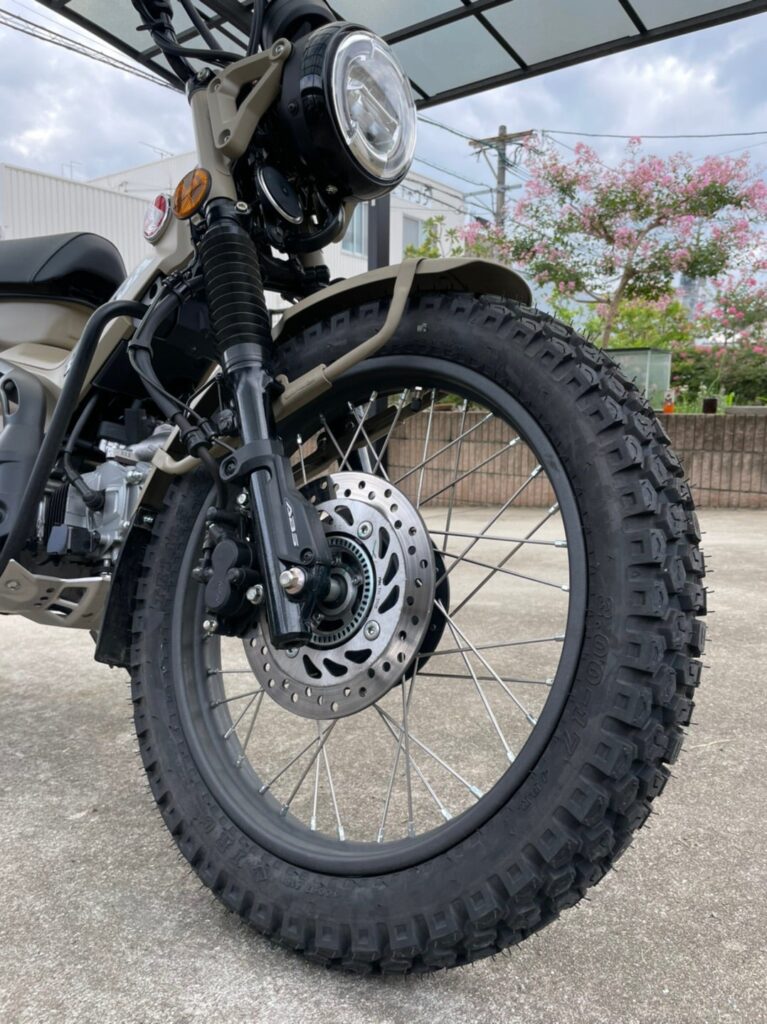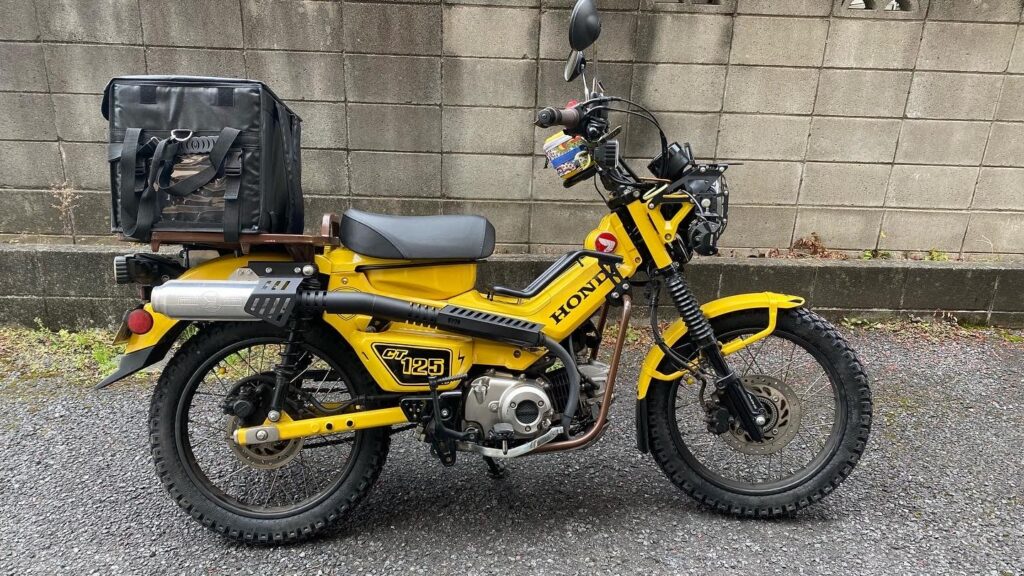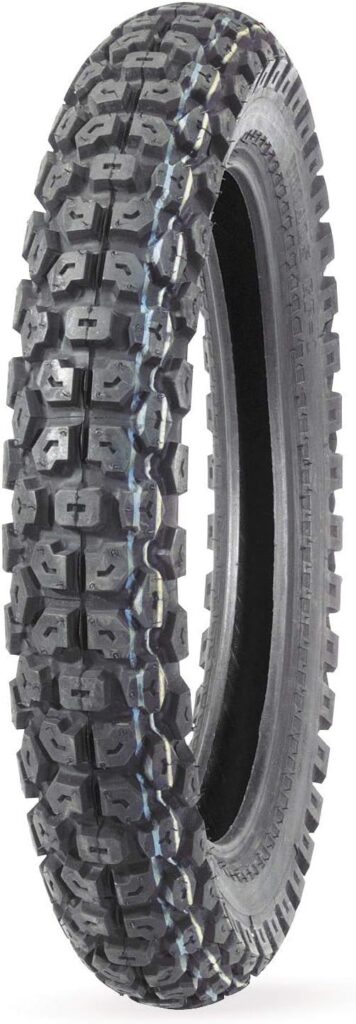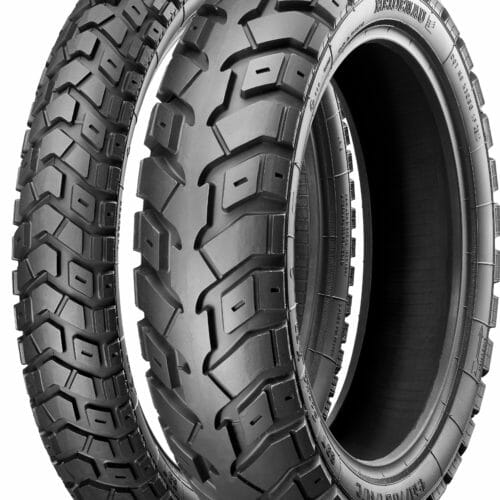An Introduction to the IRC GP-1 Tire
In my quest to explore various tire options, I recently came across the IRC GP-1. Upon closer inspection, I noticed it was labeled as a “trials” tire, which initially surprised me.
I had assumed it to be a “trail” tire. This revelation makes the tire even more intriguing.
Digging further into its specifications, I observed the manufacturing date. The tire was produced in the 29th week of 2000.
Given that a year comprises 52 weeks, this places its manufacturing date somewhere around the end of June or the beginning of July. This ensures the tire’s relative freshness, as it was crafted just a little over halfway into the year.
Understanding the IRC GP-1’s Specifications
The IRC GP-1 comes with a load rating of 364, signified by the number “45” on the tire. Furthermore, “P” indicates the speed rating. While I was keen on locating more information on the speed rating on this particular tire, it eluded my immediate inspection.
Another noteworthy feature is its construction. The tire’s marking indicates “four plies”, signified by “four PR”. From what I gather, this likely means it consists of two nylon layers and two other types of layers. However, this is merely an educated guess based on the information at hand.
Origins and Manufacturing
Delving into the company behind the tire, IRC is of Taiwanese origin. However, this particular GP-1 model that I have was manufactured in Thailand. This is a testament to the global nature of tire production and the intricate network of manufacturing hubs that cater to the international market.
With its intriguing features and the reputation of IRC behind it, the GP-1 surely stands as a tire worth considering for those in the market for a durable and reliable “trials” option.
Exploring the IRC GP-1 Tire’s Features
Upon delving deeper into the diverse range of tires available in various markets, one quickly realizes the sheer variability in their manufacturing and specifications. This observation holds especially true for the IRC GP-1 tire, which presents intriguing features that cater to specific requirements of riders.
Understanding the Speed Rating
While the tire does not explicitly indicate its speed rating, the presence of the “P” designation suggests that it belongs to the speed category that ranges from 91 to around 94 mph. It’s noteworthy that such a rating provides ample speed for this particular tire type, and one can safely assume that most bikes equipped with this tire would seldom, if ever, touch these speeds.
Assessing the Tire’s Texture and Structure
Upon tactile examination, the IRC GP-1 tire is notably soft, a trait evident on both sides. Its structure is further accentuated by prominently sized knobs, although they aren’t overly large. These knobs play a pivotal role in grip and traction, especially when navigating challenging terrains.
Channeling and Connectivity
Looking closely, the central part of the tire does not seem to connect to the three channels present. However, the center does have connections with the two sides, leading to a zigzag pattern. This particular design choice, where the base is zigzag connected, serves a specific purpose. It enhances the stiffness of the knobs, ensuring they don’t flex excessively during sharp corners. The result is a tire that maintains better traction and minimizes the risk of sliding out during high-speed turns or challenging maneuvers.
In the vast realm of tires, the IRC GP-1 stands out, offering features tailored for riders who prioritize both performance and safety. Its thoughtful design, combined with its impressive speed rating, makes it a worthy consideration for those looking to upgrade or replace their current set.
Exploring the Texture of the IRC GP-1 Tire
One of the most critical aspects when choosing a tire is its texture. This characteristic can significantly impact the performance and safety of the bike, especially during challenging maneuvers or in varying terrains. So, let’s delve deep into the tactile qualities of the IRC GP-1 tire to ascertain if it’s the right fit for riders.
Texture and Softness Assessment
The question on many riders’ minds is – how soft is the IRC GP-1 tire? If a tire is too soft, it might not provide the stability one would expect, especially when the bike is under power or during high-speed turns. The center, in particular, plays a pivotal role in this context. While added softness at the center can help in power delivery, excessive pliability might cause the tire to ‘squash out’, compromising on grip and stability.
Upon examination, the IRC GP-1 seems to have a balanced softness. It doesn’t feel exceedingly soft, rather leaning more towards a medium-soft texture. This characteristic ensures that while it remains flexible enough for optimal traction, it doesn’t compromise the bike’s stability.
Spacing and Design Elements
A closer look at the tire’s design reveals closely spaced elements, particularly when focusing on the distance between the knobs. In some areas, the spacing is approximately a quarter inch, while in others, it varies slightly – being a tad more or less. Such design choices are not just aesthetic but play a role in the tire’s functionality. The spacing between knobs can affect the tire’s grip, especially in wet conditions or off-road terrains.
When considering a tire like the IRC GP-1, it’s essential to consider all its features and design aspects.
From its texture to spacing, each element has been thoughtfully crafted to offer a balanced performance. For those in search of a tire that promises stability without compromising flexibility, the IRC GP-1 seems to strike the right chord.
Understanding the IRC GP-1 Tire Type
When selecting a tire for one’s motorcycle, understanding its primary function and application is crucial. Let’s dive into the intricacies of the IRC GP-1 tire and unravel its true purpose and characteristics.
Trial or Dual Sport: A Matter of Confusion
At first glance, many, including myself, might assume the IRC GP-1 to be a dual sport tire, designed to handle both on-road and off-road terrains efficiently. However, upon closer inspection, it becomes evident that this tire is, in fact, a trials tire.
What Defines a Trials Tire?
Trials tires differ significantly from the standard dual sport variants. Primarily used for trials riding, these tires are tailored for low-speed maneuvers, such as rock hopping and rock crawling. The core essence of trials riding revolves around precision and control rather than speed. As a result, these tires are designed to remain cooler, given that they never really heat up due to the low speeds associated with this type of riding.
One of the most discernible characteristics of a trials tire, like the IRC GP-1, is its softness.
This attribute allows for better grip, particularly on rocky terrains, enabling the tire to flex and conform to the surface for optimal traction. However, this softness can be a disadvantage when used for extended periods on highways. The heat generated during high-speed rides might cause the tire to soften excessively, leading to accelerated wear or even damage to the knobs.
Additional Observations
Keen on understanding the tire’s specifics, I employed a park tool scale for a precise weight measurement. The IRC GP-1 weighed in at six pounds and five ounces. Apart from its weight and the previously discussed characteristics, there weren’t any other standout features to note. The primary revelation, however, was the distinction between ‘trials’ and ‘trail’. While it may seem like a minor detail, understanding this difference is pivotal when selecting the right tire for one’s riding needs.
Conclusion
In the realm of motorcycle tires, the smallest details can lead to significant performance differences. The IRC GP-1, with its unique attributes tailored for trials riding, is a testament to this fact. For those seeking a tire for precision and control in low-speed terrains, this might be the perfect fit. However, if long highway rides are on the agenda, it’s essential to consider other options better suited for that purpose. Always ensure you’re choosing the right tire for the right job, and with the IRC GP-1, you’re all set for some low-speed, high-precision adventures.






